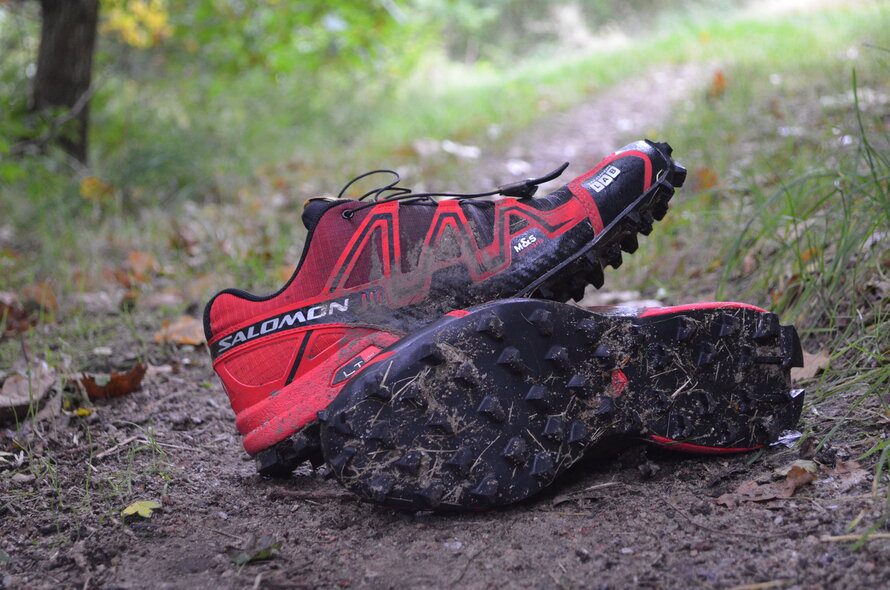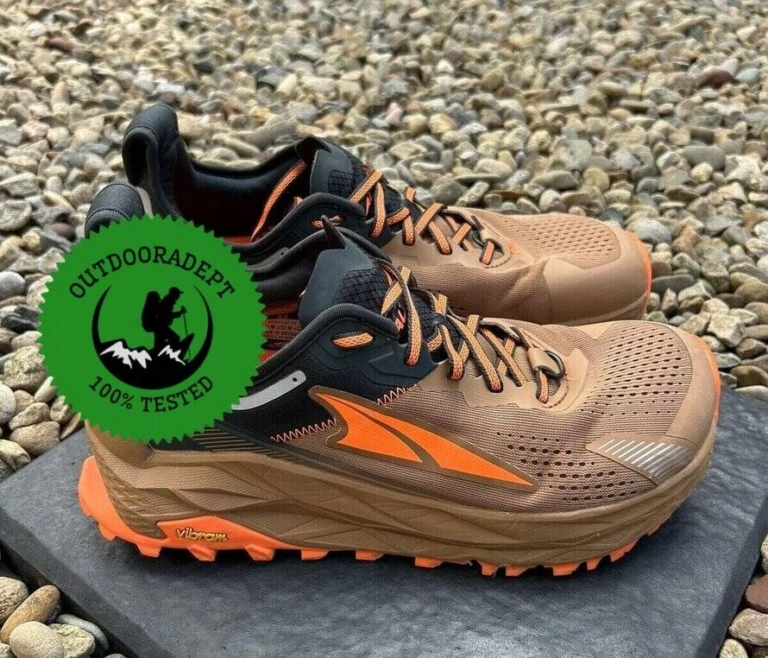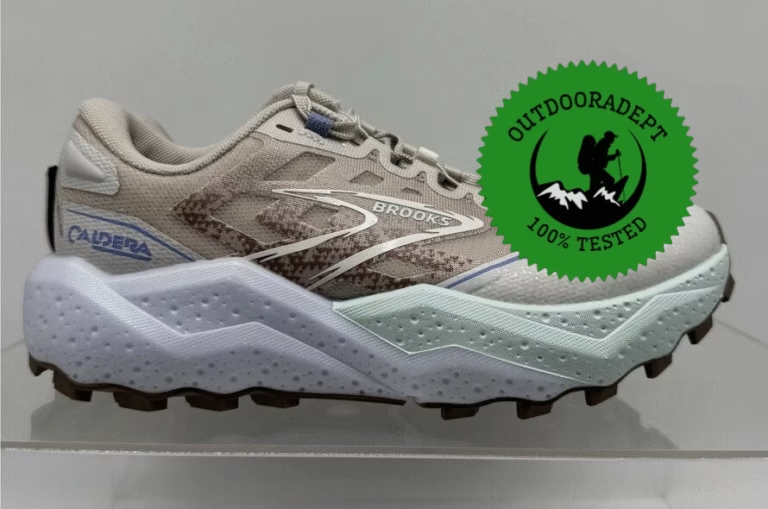To identify the top 5 waterproof trail running shoes, we tested 13 pairs across various terrains, including flat, rocky, muddy, and gravel surfaces, in both the United States and Europe. Each shoe underwent comprehensive trials for waterproofing during rain, breathability in heat, and performance across diverse landscapes. Our team’s multi-day tests, complemented by insights from independent experts, determined each shoe’s fit and break-in period. The shoes were rated based on key criteria such as fit, cushioning, tread, breathability, and more. After calculating average scores, we also factored in external feedback and warranties to finalize our recommendations. Learn more about our product selection process.
After testing various waterproof trail running shoes, the Brooks Cascadia 17 GTX stands out as my top pick. It ticks all the boxes for performance, comfort, and durability during rigorous trail runs.
With the advanced GORE-TEX technology, the Cascadia 17 GTX offers exceptional waterproofing, keeping your feet dry in even the wettest conditions. This shoe excels in providing both protection and breathability, ensuring your feet stay dry and comfortable throughout your run.
The Cascadia 17 GTX also features a high-traction outsole that handles wet and muddy terrain with ease. Its multi-directional lugs provide a solid grip, ensuring stability on mixed surfaces.
The shoe’s midsole cushioning is responsive and supportive, making it suitable for long-distance runs without sacrificing comfort.
| Model | Rating | Weight (Pair) | Key Feature | Best For |
|---|---|---|---|---|
| Brooks Cascadia 17 GTX | 4.8/5 | 1 lb. 3.6 oz. | Excellent cushioning, versatile traction | Long-distance trail running |
| Nike Pegasus Trail 4 GTX | 4.6/5 | 1 lb. 4.7 oz. | Durable with smooth ride on trails | Mixed terrain running |
| Salomon Speedcross 6 GTX | 4.5/5 | 1 lb. 5.3 oz. | Aggressive tread for slippery surfaces | Muddy or technical trails |
| Brooks Ghost 15 GTX | 4.4/5 | 1 lb. 2.4 oz. | Plush comfort with responsive cushioning | Lightweight trail running |
| La Sportiva Bushido II GTX | 4.4/5 | 1 lb. 7.1 oz. | Great for rocky trails with superior grip | Rocky and rugged terrains |
Our Top Recommended Waterproof Trail Running Shoes
1) Brooks Cascadia 17 GTX – Rating 4.8/5
The Cascadia 17 GTX is what I would call an evolution in the waterproof trail running space.
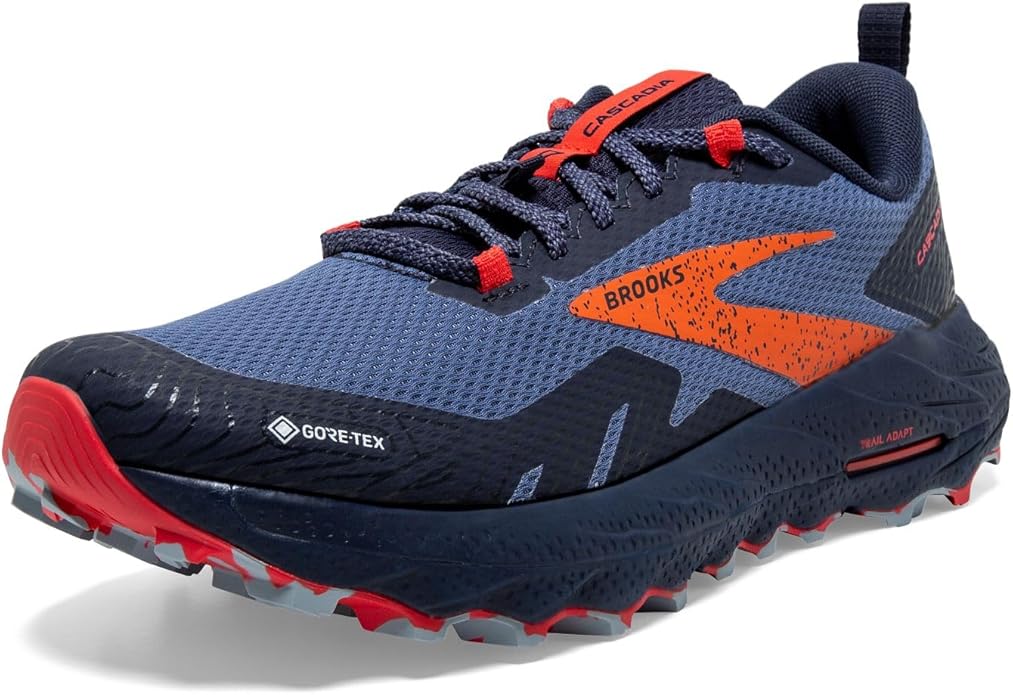
A clear improvement over the Cascadia 16, this updated version continues to deliver outstanding waterproofing with its Gore-Tex Invisible Fit membrane, while enhancing comfort and stability.
Designed for unpredictable weather and rugged landscapes, it holds its ground even in the messiest of conditions.
It now features a reengineered Trail Adapt System, combining a more adaptive midsole, rock plate, and outsole to better respond to uneven terrain. On technical descents and loose gravel, the grip was noticeably more stable and consistent—giving extra confidence on every step.
While still on the heavier side, the Cascadia 17 GTX adds more comfort and responsiveness underfoot than its predecessor, making it a solid pick for long wet-weather runs and hikes.
Specs:
- Weight (pair): 1 lb. 4.7 oz. (women’s 7); 1 lb. 41 oz. (men’s 10)
- Upper Material: Engineered monomesh
- Top Features: Trail Adapt System, Gore-Tex Invisible Fit, DNA LOFT v2, Ballistic Rock Shield
PROS
CONS
2) Nike Pegasus Trail 4 GTX – Rating 4.6/5
The Nike Pegasus Trail 4 GTX boasts an Invisible Fit Gore-Tex membrane integrated into the shoe’s construction, which offered reliable waterproofing on humid trails and made us award it the prize for the best waterproof trail shoes we’ve tested in the rain.
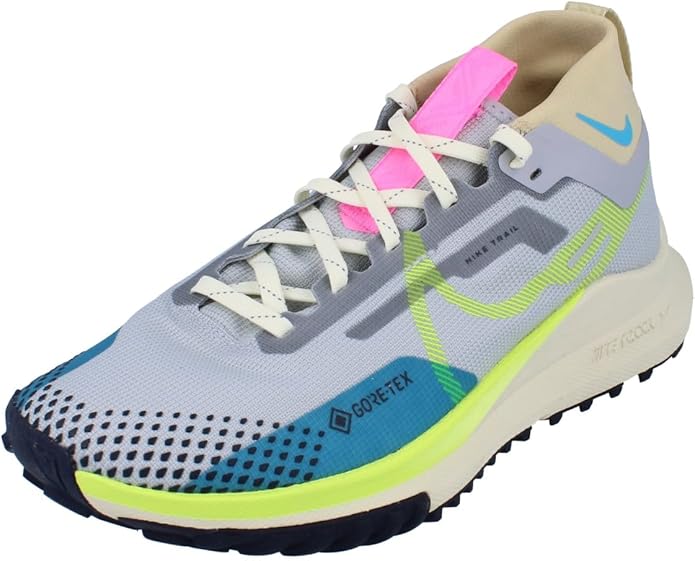
Although this high-performance shoe is highly versatile, it is slightly bulkier than the Nike Pegasus Trail 3, which might deter runners looking for snug options. However, for runners with wide feet, the roomier toe box is definitely a hit.
Also, compared to its predecessor, the Nike Pegasus Trail 4 GTX shows pivotal improvements, primarily in its cushioning. Nike React technology provided outstanding shock absorption and a smooth ride, allowing us to have an enjoyable experience even on rocky terrains.
Specs:
- Weight (pair): 8.5 oz. (women’s 8); 9.6 oz. (men’s 10.5)
- Upper Material: Elite-engineered mesh
- Top Features: Nike React cushioning, aggressive outsole, roomier toe box
PROS
CONS
3) Salomon Speedcross 6 GTX – Rating 4.5/5
The Salomon Speedcross 6 GTX marks a competitive spot in my top seven best Gore-Tex trail running shoes, standing as an impressive upgrade from its preceding version.
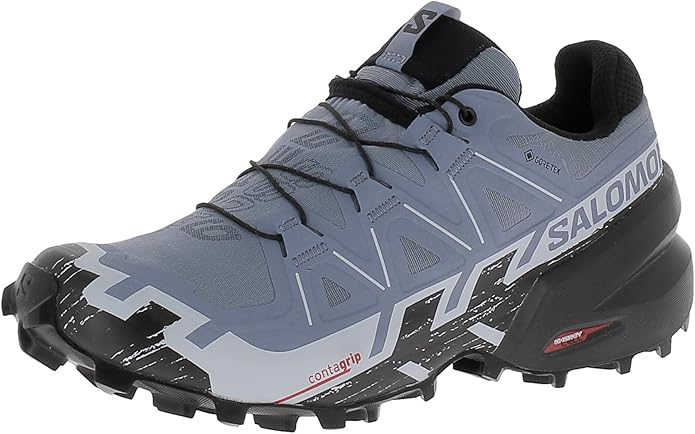
A key feature is the shoe’s full Gore-Tex upper, ensuring that wet weather and stream crossings do not make my feet wet, rendering it a fantastic waterproof trail shoe.
Upgraded from the Speedcross 5, the Speedcross 6 GTX offers a more stable ride on rocky terrain thanks to its improved rigid base and flexible rock plate.
The shoe may feel a bit narrow for those with wide feet, but this is a minor trade-off, considering its excellent features.
Specs:
- Weight: 9.5 oz. (women’s 8); 11.5 oz. (men’s 9)
- Upper Material: Gore-Tex Synthetic
- Top Features: Gore-Tex liner, Contagrip® outsole, EnergyCell™+ midsoles.
PROS
CONS
4) Brooks Ghost 15 GTX – Rating 4.4/5
This model is the waterproof version of an already highly praised road shoe, which has been thoughtfully upgraded for trail running.
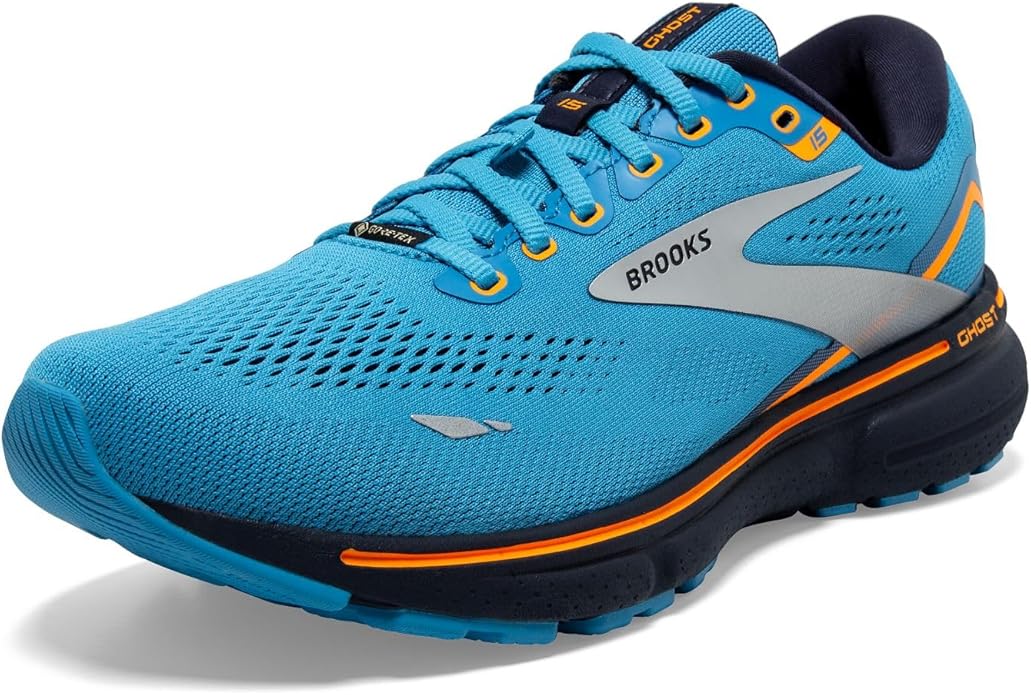
In line with its predecessor, Ghost 14, this new model maintains the DNA LOFT cushioning that offers a responsive ride and comfortable shoe experience.
However, I found the GTX version with an added Gore-Tex Invisible Fit membrane for waterproofing considerably more robust on wet rocks and other challenging terrains.
On the flip side, while the GTX membrane effectively keeps cold temperatures and water at bay, it made the trail runner feel slightly heavier and warmer, which might be less suitable for lighter trails and warmer weather.
Specs:
- Weight (pair): 1 lb. 2.4 oz. (women’s), 1 lb. 4.4 oz. (men’s)
- Upper Material: Air Mesh
- Top Features: DNA LOFT v2 midsole, Gore-Tex Invisible Fit, segmented crash pad
PROS
CONS
5) La Sportiva Bushido II GTX – Rating 4.4/5
Considering the elements that make a waterproof trail running shoe a game-changer, the La Sportiva Bushido II GTX has a few key features that had me taken aback during testing.

This running shoe sports state-of-the-art Gore-Tex technology, sporting an excellent waterproof upper that fended off the challenge of skiddy trails, keeping my feet dry beyond expectations.
Compared to the previous model, the Bushido II GTX showcases an improved, thick midsole, providing much-appreciated comfortable and supportive cushioning. This tweak enhances the ground feel, a feature many runners seek in a decent pair of hiking shoes.
However, while the secure fit is usually a positive aspect, the whole team agreed that this trail shoe feels a bit tighter around the midfoot.
Specs:
- Weight (pair): 1 lb. 5.8 oz. (women’s 8), 1 lb. 10.6 oz. (men’s 9)
- Upper Material: Air Mesh with microfibre overlays
- Top Features: GORE-TEX Invisible Fit, slip-on construction, FriXion® XT V-Groove2™ outsoles, and Trail Rocker™ geometry
PROS
CONS
Factors We Considered
When assessing the best trail running shoe models, these are the factors I’ve considered
1. Waterproof Capability
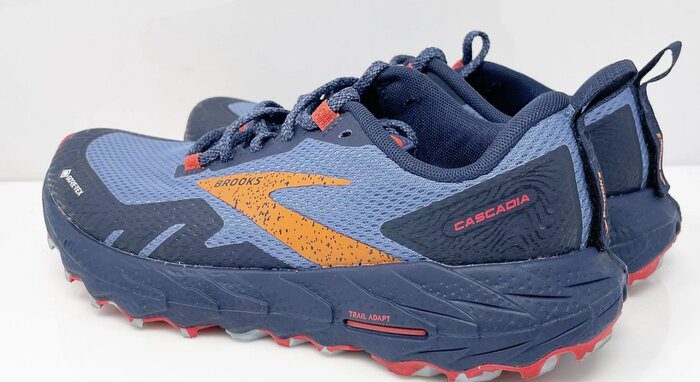
The Brooks Cascadia 17 GTX excels in waterproof performance, keeping your feet dry no matter how wet the conditions are.
The Nike Pegasus Trail 4 GTX also delivers solid waterproofing with its GORE-TEX lining, preventing water from getting in and keeping your feet dry even in heavy rain.
The Salomon Speedcross 6 GTX is built for tough, wet terrains, and its GORE-TEX lining keeps water out while you cross streams or run through mud.
The Brooks Ghost 15 GTX does a decent job of keeping water out, but it’s not as reliable in heavy, prolonged rain.
The La Sportiva Bushido II GTX performs well in light rain but struggles in very wet conditions.
2. Grip and Traction
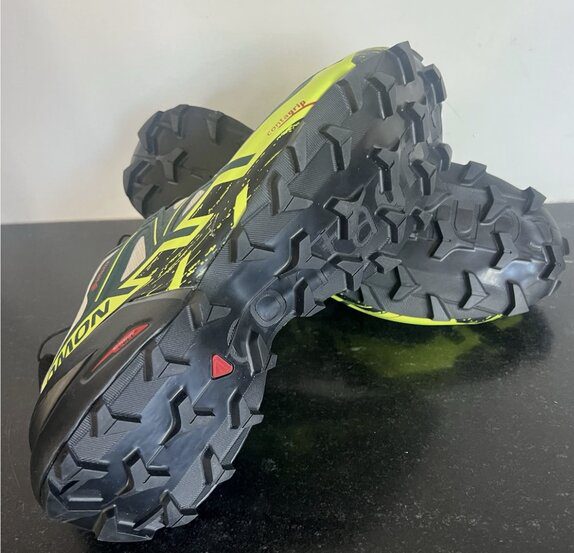
When it comes to grip, the Salomon Speedcross 6 GTX takes the lead. Its deep, aggressive lugs provide excellent traction, especially on slippery and muddy trails.
The Brooks Cascadia 17 GTX offers reliable grip, but it’s not as aggressive as the Speedcross.
The Nike Pegasus Trail 4 GTX provides solid traction, making it suitable for various trail conditions, but its grip doesn’t compare to the Salomon Speedcross, which outperforms it on wet, rocky, and muddy terrains.
The Brooks Ghost 15 GTX has less traction, designed more for lighter trails rather than technical or rough terrains.
The La Sportiva Bushido II GTX offers good grip for short, rocky runs, but it doesn’t match the traction of the Speedcross or Cascadia on more rugged trails.
3. Breathability
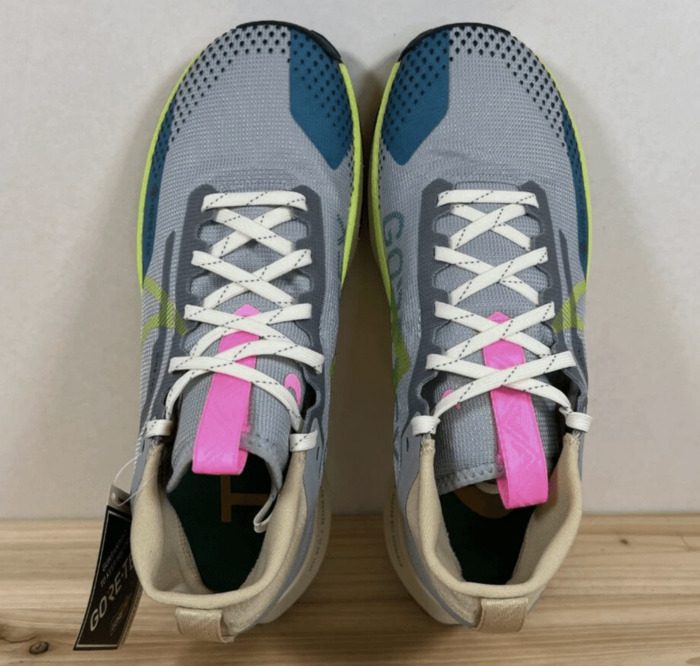
The Nike Pegasus Trail 4 GTX stands out with its breathable upper that allows for airflow while still maintaining waterproof protection.
The Brooks Cascadia 17 GTX is also fairly breathable, though its upper is slightly more closed off, limiting ventilation compared to the Nike.
The Brooks Ghost 15 GTX offers breathability with its mesh upper, but it doesn’t provide the same ventilation level as the Nike.
The Salomon Speedcross 6 GTX doesn’t focus as much on breathability, with its waterproofing leading to reduced airflow, making it less breathable in hot conditions.
The La Sportiva Bushido II GTX also sacrifices breathability for added protection and durability, making it less comfortable in warm weather.
4. Comfort
The Brooks Cascadia 17 GTX is among the most comfortable shoes on the list, offering excellent cushioning and arch support for long runs.
The Nike Pegasus Trail 4 GTX is also very comfortable, with a responsive midsole and plush padding, perfect for longer distances.
The Salomon Speedcross 6 GTX is supportive but a bit firmer compared to the other shoes, which may make it less comfortable for those seeking a softer, more cushioned ride.
The Brooks Ghost 15 GTX provides decent comfort, though it’s more suited for lighter trail runs than rougher, longer treks.
The La Sportiva Bushido II GTX is more performance-oriented with a firmer fit, which might not be as comfortable for longer runs but is great for technical terrain.
5. Sole Design
The Nike Pegasus Trail 4 GTX has a substantial stack height and a well-cushioned sole which offers protection from rocks and debris.
The Brooks Cascadia 17 GTX provides a rugged outsole that protects against rocks and debris while delivering a comfortable cushioning for your feet.
The Salomon Speedcross 6 GTX has a more rigid sole that’s excellent for gripping on slippery terrain but doesn’t provide as much cushioning as the Cascadia or Pegasus.
The Brooks Ghost 15 GTX features a simpler sole with adequate cushioning, but it doesn’t offer the same level of protection from rough terrain.
The La Sportiva Bushido II GTX has a minimalist sole that provides great ground feel but lacks the cushioning and protection found in the other models.
Benefits of Using Waterproof Trail Running Shoes
Waterproof running shoes offer plenty of advantages, particularly aimed at enhancing your outdoor running experience:
- Superior Weatherproofing: The best trail running shoes are equipped with a waterproof barrier. This feature ensures you don’t have to deal with wet feet even when you’re running on trails drenched from rain or thick with snow.
- Enhanced Traction: Many waterproof running shoes come with specialized outsoles that offer excellent grip on slippery or wet surfaces, enhancing your stability and confidence on the trail.
- Improved Comfort: When you encounter wet trails or cross streams, your feet will remain dry, preventing discomfort and blisters that can occur from prolonged exposure to moisture.
In this study by the Indiana University School of Medicine, 64% of the subjects identified blisters as the main medical issue during their hikes, which further highlights the need for comfortable footwear, something that most popular trail running shoes integrate.
Disadvantages of Using Waterproof Trail Running Shoes
While waterproof running shoes undeniably have their strengths, they also come with challenges worth considering.
- Reduced Breathability: Though certain brands incorporate technology like Gore-Tex to enhance permeability, no waterproof shoe can wholly match the breathability of a non-waterproof counterpart.
- Heavier in Design: The integration of waterproof membranes, generally denser and weightier materials, could result in heavier shoes, impacting your agility over longer distances.
- Longer Drying Time: Despite being waterproof, these shoes will eventually get wet inside, either from sweating or water seeping in over the top. When they do become wet, they also tend to take longer to dry out.
FAQs
A trail running shoe becomes waterproof through the integration of certain materials or technologies in its design. The most common is a waterproof membrane, such as Gore-Tex, which is inserted between the outer material and inner lining.
You can use waterproof trail running shoes in various weather conditions. They excel in wet and muddy situations, protecting feet from moisture. However, in extremely hot conditions, they may not be as breathable and could cause overheating.
To maintain your waterproof trail running shoes, remove dirt after each use and avoid machine washing. Allow them to dry naturally, away from direct heat. Also, regularly check for wear and tear.

